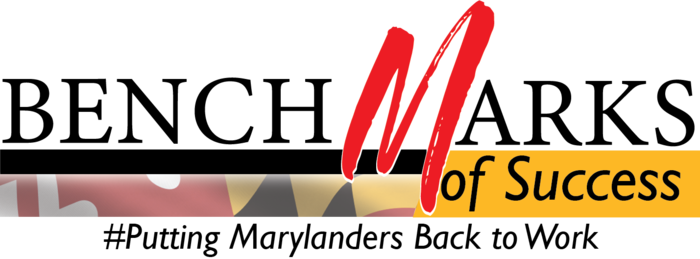 |
|
Monthly Newsletter - Issue 22, January 2021
|
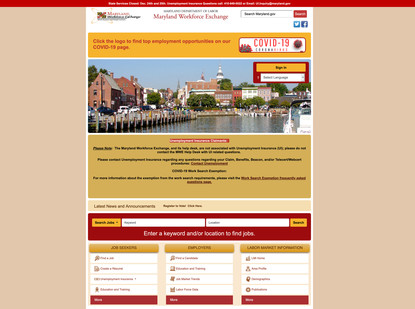
Virtual Resources for Skilling-Up
Every day, frontline staff across Maryland’s workforce system encourage jobseekers to improve their prospects for employment by strengthening their literacy and/or numeracy skills or gaining industry-recognized credentials. Despite understanding the benefits, some job seekers hesitate to pursue such opportunities. Perhaps they are overwhelmed at the idea of navigating a large educational institution, or maybe they are worried they will not be able to cover the costs of tuition or supplies. They may be concerned about their ability to juggle a class schedule in addition to family and work commitments. The good news for hesitant job seekers is that the Maryland workforce system offers diverse training opportunities that are free, easy to access and available whenever they are!
Individuals who enroll in the Maryland Workforce Exchange (MWE) can access a rich collection of quality and (mostly) free online learning resources that offer jobseekers short on time and/or money a way to skill-up while between jobs or to upgrade their knowledge through virtual learning to win that promotion!
In order to access the many valuable online learning resources through MWE, follow these steps:
- Scroll down the homepage to the menu with the heading "Job Seekers,"
- Click the link beneath the "Job Seekers" heading for "Education and Training,"
- When a new page opens up, scroll down to "Online Learning Resources," and
- Clicking on this link will take site visitors to the main online learning page.
ALISON is one of the world's largest free learning resources with free access to 900+ courses at Certificate, Diploma, and Learning Path levels in 16 categories including: IT, Language, Science, Business, Humanities, Health, Math, Software Development, Marketing, Lifestyle, Life Science, Software Engineering, Health Care, Operations and Skilled Trades. Site visitors can use the site to become more competitive in the workplace or simply learn for personal development. Note: Alison may charge the learner a nominal cost for certificates or parchments related to course completions.
Metrix Learning is a web-based learning management system that helps individuals gain new skills, close skill gaps, and earn certifications for new employment opportunities. Metrix offers over 10,000 world-class e-learning courses delivered in 10 career pathways (IT, health care, manufacturing, etc.) with over 200 occupations. Course topics include: workplace skills, leadership, project management, Microsoft Office, and Six Sigma. Learners have access to customized learning plans and a FREE certificate of completion for passing each course.
Workplace Skills
GCFLearnFree.org - Funded by the Goodwill Community Foundation, GCFLearnFree.org provides free computer, technology, and life skills training online. Users can sign up for scheduled online classes, or take any of the free tutorials at their own pace. Popular topics include computer technology, math and money basics, career and workplace development, and other everyday life skills.
Vocational Information Center - The Vocational Information Center website is a directory that provides links to online resources for career exploration, career and education, work opportunities, trade and technical schools, and career-related references.
ERI Human Resources Distance Learning Center - ERI offers more than 50 different free courses in human relations topics such as health insurance and retirement investment plans, employee benefit programs, tax issues, compensation and salary administration, and online recruiting.
LINCS Adult Education and Literacy - The Learning Activities Bank collects and distributes high-quality learning activities that focus on the basic skills and knowledge adults need to be effective in the 21st Century workplace.
In addition to the resources already listed, the Online Learning Resources page offers access to open courseware programs offered by universities across the nation, links to training in business and technology, and more.
Be sure to bookmark this excellent resource and share widely with those you serve!
------------------------------------------------
COVID-19 Corner
The Maryland Community Action Partnership recently added a new brief to the organization’s Community Action COVID-19 Resource Series titled “Applying the EQUITY LENS to COVID-19 Response and Recovery.” The brief examines issues related to the variable impacts on the pandemic of people of color and lists several equity implications, including the following excerpt on prioritizing workers disproportionately impacted by the health and economic crisis: “Persons of color make up the majority of service workers, day laborers, and those who are dependent on the formal and informal (gig) economy of industries that have minimal work protections. Efforts focused on understanding their unique needs and specialized responses, which connect them with needed supports related to housing, high quality childcare, transportation, and accessible health care are crucial to achieving an equitable response.”
|
|
SURVEY!
Periodically, this newsletter will include a survey to gather information from readers regarding issues of concern to frontline staff or to understand how different partner programs implement workforce system services. This first survey is seeking feedback from frontline staff on how partners collect data on financial literacy services. There are just two questions involved and your responses are anonymous. We hope you will participate!
Yes! Take me to the survey!
___________________________
Quick Resources
Benchmarks of Success Resource Page
Workforce Innovation and Opportunity Act (WIOA) Resource Page
Maryland’s State Workforce Plan
___________________________
Upcoming 2021 Newsletters
2/23, 3/23, 4/20, 5/25, 6/22, 7/20, 8/24, 9/21, 10/26, 11/23
___________________________
Collateral
Download and share the Benchmarks of Success poster, rack card, and two-sided flyer!
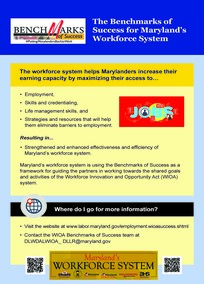 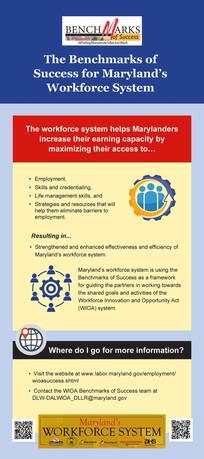 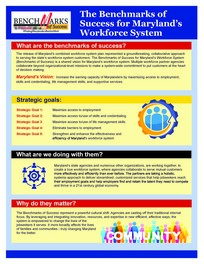
|
|
|
Mentoring and Support Help Pierce G. Reach his Educational Goals

Nineteen-year-old Pierce G. knew he needed a high school degree to live up to his potential. He also knew he would need help to overcome a variety of obstacles standing between him and the diploma he wanted so much. Fortunately, Pierce found the Howard County Library System’s Project Literacy, one of 25 Adult Education providers across the state of Maryland. Project Literacy staff worked closely with Pierce over a two-year period to help him address his challenges and stay focused.
Transportation was his biggest issue. Traveling to and from the library to attend classes required a two-hour bus ride that left him feeling frustrated and drained of motivation. The length of commitment necessary to complete his studies also sometimes discouraged Pierce enough to make him take breaks that slowed his progress even more. But with support from his parents, Project Literacy staff, and his own drive to succeed, Pierce worked past occasional setbacks. He continued to attend classes and tutoring sessions for close to two years.
The tide turned for Pierce when the library closed due to the pandemic and tutoring sessions were moved online. With the transportation barrier removed, Pierce's attendance at tutoring sessions became much more regular and his progress accelerated dramatically. In very short order, Pierce was able to take and pass the National External Diploma Program® (NEDP®) entrance exams. The NEDP® is a unique path to a high school diploma that allows the student to work independently on a self-paced series of assigned tasks or competencies that develop academic and life skills such as reading, writing, mathematics, oral communication, critical thinking, self, social, occupational awareness and other workplace skills. A trained NEDP® assessor reviews the student's portfolio to confirm that they have acquired the skills required to be awarded a Maryland High School Diploma. As Pierce works through his assignments, he receives support from his NEDP® coach, who gives him guidance and encouragement. A group of teachers and mentors, including his parents, his NEDP® assessor, and other program staff are the cheering section that help to keep him focused and on the road to a bright future.
The Workforce Innovation and Opportunity Act (WIOA) and Adult Education
A recent analysis conducted by Northeastern University indicates that earning a high school diploma can increase an individual’s average annual income by more than $8,000 and reduce the risk of unemployment. A high school diploma also serves as the foundation for any future post-secondary education, which offers even greater financial and job security rewards. Because literacy and credentials are so central to stable employment and the potential for advancement on career pathways, WIOA includes Title II, the Adult Education and Family Literacy Act. WIOA Title II funds adult education and skills development programs that help workers, including immigrants and individuals with limited English language skills, earn educational and occupational credentials. There are 25 local Adult Education providers serving Marylanders. To learn more about Maryland’s Adult Education and Family Literacy Program, review this section in the Maryland State Workforce Plan for 2020 – 2024 (begin on page 172) or visit the Maryland Department of Labor’s website. Specific information on Maryland services related to the NEDP® are here.
|
Workforce Partners
Maryland Department of Labor Maryland Department of Human Services
Maryland State Department of Education Governor's Workforce Development Board
Maryland Department of Housing and Community Development Maryland Workforce Association
|
|
Did You Know...?
|
Maryland's Latest Workforce Development Updates
-
National Mentoring Month - January is National Mentoring Month, an annual nationwide mentoring campaign dedicated to celebrating and elevating the mentoring movement. Strong mentors can provide a powerful support network for jobseekers, particularly young jobseekers who are new to résumés, interviews, and the world of work. The National Mentoring Summit will be held January 27 – 29, 2021. The last day of the summit is being observed as “Thank Your Mentor Day,” a day to show gratitude to mentors by posting on social media using hashtags #ThankYourMentor, #MentoringAmplifies, and #MentoringMonth. This video was produced by the MENTOR organization for the 2021 Mentoring Amplifies public awareness campaign. Frontline workforce system staff working with youth can find numerous career resources for youth through the Maryland Department of Labor Youth Workforce Programs and Services.
-
System-wide Training is Coming Soon - The Workforce Innovation and Opportunity Act (WIOA) charges partner programs to work collaboratively to coordinate and integrate services so that jobseekers receive robust, customized solutions that help them to reach their employment goals. This can be easier said than done in a large statewide system made up of multiple large agencies, where different partner programs may be focused on serving a selected population within the workforce system’s universe of customers. To support the development of a cohesive system in which partners are aware of the full menu of system-wide resources and the overall strategic goals of the system, John Feaster began work as the Chief Learning Officer for the Maryland Department of Labor in 2019. One of John’s many duties is to chair the Professional Development and Technical Assistance (PDTA) Committee. This group is currently working to provide professional development and technical assistance programming to approximately 1,500 frontline staff employed in Maryland state government and local partner agencies throughout Maryland’s workforce system, using the framework of Maryland’s Benchmarks of Success. Training products are being designed as asynchronous e-learning modules to disseminate consistent information that staff can complete at their convenience. Training modules will include small, easily-digestible chunks of information that cover:
- The state’s learning management system – the HUB – what it is and how to use it;
- An overview of the Benchmarks of Success initiative as a guiding vision for the workforce system;
- Modules which focus on each major Title and how they connect to the bigger picture.
The rollout of Module 1 is anticipated in the next few months, so keep any eye out!
-
Labor Market Information - The most up-to-date information available on unemployment, wages, job openings and training opportunities is just a click away for workforce system staff and the jobseekers they serve. The Maryland Workforce Exchange (MWE) offers regularly updated Labor Market Information (LMI) that allows a website visitor to drill down to the county level to see the average salary for the area and search live job listings by local employers with the most job openings. A jobseeker considering a career change can view projections for the expected growth of industry sectors or occupations. A jobseeker concerned about pursuing a job that would involve a significant commute can even view a customized commuting patterns report for their region. The thoughtful design and expansive search options of MWE’s LMI site make it a resource every service provider should take time to explore!
-
Where are they now? What are the employment and educational outcomes for Maryland high school graduates during the first five years completing their secondary schooling? That is the central question addressed in the third Career Preparation Expansion Act Annual Report to the Governor and General Assembly, released jointly by the Maryland Longitudinal Data Systems (MLDS) Center and Governor’s Workforce Development Board (GWDB) each December. The 2020 report released last month is available here.
The report is organized around three main research questions:
- What are the average wages of Maryland high school graduates five years out?
- How many hours per week are these post-graduates working, on average?
- Which industries are they working in?
In addition to the above-noted primary research questions, the 2020 report also examined the wage outcomes for high school graduates by demographic and economic characteristics and their post-educational attainment. The report offers conclusions and implications based on data findings.
The MLDS is the State’s central repository for student and workforce data, responsible for conducting data analysis, producing relevant information, and informing choices to improve student and workforce outcomes in the State of Maryland. As the body appointed by the Governor to plan, coordinate, and monitor State programs and services for workforce development, the GWDB provides input on the connection points between education and business needs.
-
New One-Stop Resource for System Programs and Services - Maryland’s workforce system is comprised of multiple partner agencies and a variety of programs designed to address the specific issues or populations. A service provider’s ability to leverage and coordinate a customized combination of services in this complex system is essential to effectively serving job seekers, especially job seekers with barriers to employment. Service providers need to be experts in their own program and aware of the resources available through other programs too. That global awareness can be harder than ever to maintain in an entirely remote workforce. To help frontline staff stay current on what programs exist and where to find them, Maryland’s Department of Labor, Department of Human Services, and Department of Housing and Community Development worked together to create a handy desk reference. This well-organized, easy-to-read three-page document summarizes programs and provides numerous links to resources, all in one place. Bookmark this valuable resource for future reference!
-
Accessibility Tip of the Month - All Maryland Workforce System staff should be sure that the digital and printed materials they publish are accessible to individuals with disabilities, including internal and public-facing documents. But if accessibility issues are not a focus of your job, knowing where to start can feel a little overwhelming. We will include tips each month to help our newsletter readership introduce themselves incrementally to easy accessibility tips and tricks.
People with visual impairments frequently use assistive technologies to read a document. This is typically software that reads a computer screen out loud. These screen readers detect the structure and features of a document by looking at the document’s underlying code. When the document is coded properly, it is accessible.
There are seven requirements to make a Word document accessible, including:
- Document Structure
- Figures
- Hyperlinks
- Lists
- Columns
- Color and Contrast
- Tables
This month we’ll tackle #1 - Document Structure.”
First, and most important, a document must have Structure. Word documents are structured and organized by using a feature called “heading styles.” Microsoft provides multiple levels of heading styles, with the highest and most important level listed as Heading 1. As heading levels decrease in importance, the heading number increases. Most documents use only three or four heading levels.
You can think of document structure as an outline. Word lets you view this structure, or outline, using Document Navigation. When you look at the Document Map in the Navigation Pane, notice that each descending level of heading style is indicated by an indentation to the right, similar to the appearance of an outline. The Document Map allows you to see the organization of the document and easily move through it by clicking on appropriate headers. A properly structured document also lets you create an automated Table of Contents with two simple clicks. If your document is edited after the Table of Contents is created, a single click on the Productivity tab will update it.
Content excerpted from the Office of the Texas Governor’s Creating Accessible Microsoft Office Documents resource page.
______________________________
Benchmarks of Success Newsletters
- Issue 01, July 2018
- Issue 02, August 2018
- Issue 03, September 2018
- Issue 04, October 2018
- Issue 05, November 2018
- Issue 06, December 2018
- Issue 07, February 2019
- Issue 08, March 2019
- Issue 09, April 2019
- Issue 10, May 2019
- Issue 11, June 2019
- Issue 12, July/August 2019
- Issue 13, September 2019
- Issue 14, October 2019
- Issue 15, November/December 2019
- Issue 16, January 2020
- Issue 17, February 2020
- Issue 18, April 2020
- Issue 19, September 2020
- Issue 20, October 2020
- Issue 21, November/December 2020
______________________________
Benchmarks of Success Committee Updates
Committee Chairs welcome questions from newsletter readers regarding the work in which their groups are involved! To be connected with a committee's leadership team, feel free to contact the Communications Committee at dlwdalcommunications-labor@maryland.gov.
All committees are currently meeting virtually.
- The Executive Steering Committee is composed of the agency leaders of the partner agencies who meet periodically to provide the WIOA Alignment Group with high-level guidance. You can learn more about the Executive Steering Committee’s ongoing activities here.
- The WIOA Alignment Group is composed of the department and division-level leaders of partner agencies who meet on a monthly basis to collaboratively address issues, plan joint efforts, make recommendations to the Executive Steering Committee, and manage and guide the activities of the Benchmarks of Success committees. The WIOA Alignment Group's most recent meeting was held on January 25, 2021. You can learn more about the WIOA Alignment Group’s ongoing activities here.
- The Data and Dashboard Committee is comprised of representatives from partner agencies who possess subject matter expertise in program-based performance requirements and data collection methodologies and tools. The Committee meets on a quarterly basis to develop a consistent, sustainable system all workforce partners can use to measure, analyze, display, and apply Benchmarks data to continuously improve the quality and effectiveness of services. The Committee’s most recent meeting was held on November 17, 2020. The group's next scheduled meeting will be held on February 16, 2021. You can learn more about the Data and Dashboard Committee’s ongoing activities here.
- The Communications Committee is comprised of representatives from partner agencies who possess subject matter expertise in programs and communications methods and tools. The Committee meets on a monthly basis to foster the integration of Maryland’s workforce system by broadly promoting the activities of the Benchmarks of Success committees and the services and resources of partner agencies and programs. The Committee produces this monthly newsletter as a forum for partners to share information on important developments that impact the system. The Committee's most recent meeting was held on January 14, 2021. The group's next scheduled meeting will be held on February 11, 2021. You can learn more about the Communications Committee’s ongoing activities here.
- The Policy Committee is comprised of representatives from partner agencies who possess subject matter expertise in workforce system policy issues. The Committee meets on a monthly basis to research policy issues and produces an annual Policy Recommendations Report. The recommendations included in the Report help to guide system priorities and initiatives. The Committee’s most recent meeting was held on November 19, 2020. The group's next scheduled meeting will be held on March 18, 2021. You can learn more about the Policy Committee’s ongoing activities here.
- The Professional Development and Technical Assistance Committee works to advance a unified professional development program that helps all partner programs maximize access to and use of skills and credentialing and life management skills, eliminate barriers to employment through the use of supportive services, and strengthen and enhance the effectiveness and efficiency of the workforce system. The Committee’s most recent meeting was held on December 18, 2020. The date of the first meeting of 2021 has not yet been set. You can learn more about the Professional Development and Technical Assistance Committee’s ongoing activities here.
_______________________
We would love to hear from you! Please take this brief survey and let us know how we are doing with getting the word out regarding the Benchmarks of Success! https://goo.gl/forms/GyeXFshutUgtWeXE2
Have a story you would like to see featured? Email us at dlwdalcommunications-labor@maryland.gov.
|
|
|
|
|
1100 North Eutaw Street
Baltimore, MD 21201
|
|